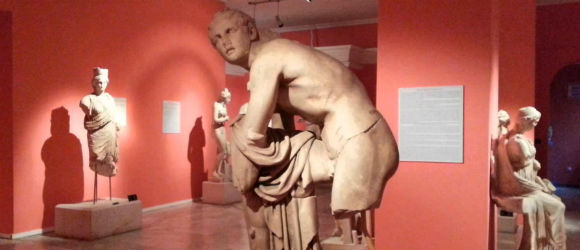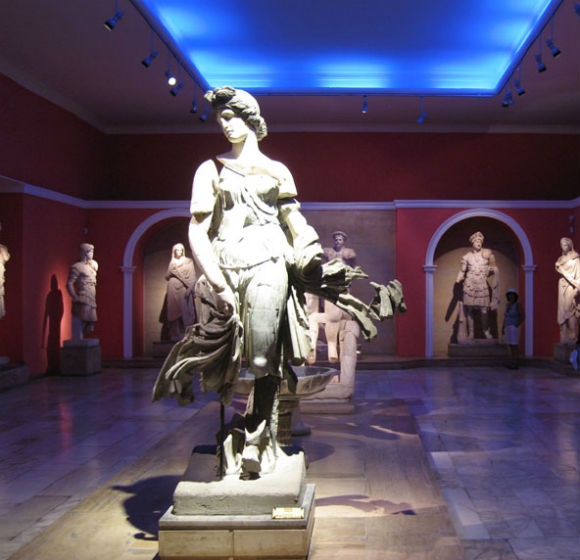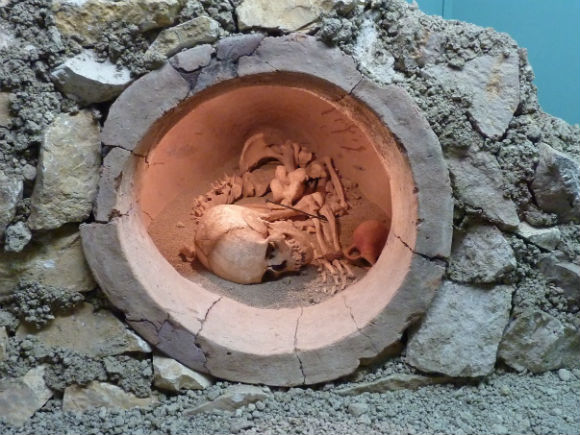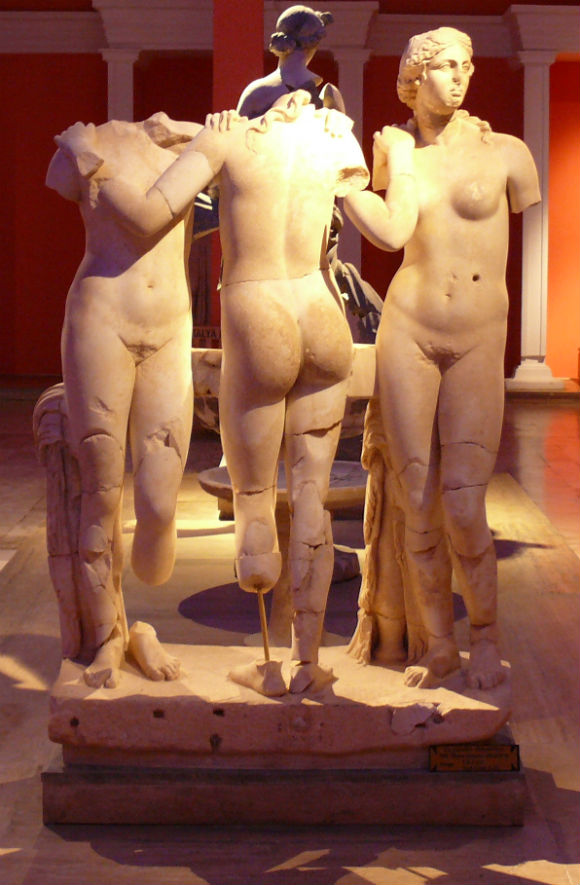The Antalya Archaeological Museum is one of Turkey’s largest museums, located in Antalya. It includes 13 exhibition halls and an open air gallery. It covers an area of 7,000 m2 (75,000 sq ft) and has 5000 works of art are exhibited. In addition a further 25,000–30,000 artifacts which cannot be displayed are in storage. As a museum exhibiting examples of works, which illuminate the history of the Mediterranean and Pamphylia regions in Anatolia, Antalya Museum is one of the most important of Turkey’s museums. The Museum won the “European Council Special Prize” in 1988.
At the end of the World War I, during the time when Antalya was under the Italian military occupation, Italian archeologists started to remove the archeological treasures that had been found in the center or the surroundings to the Italian Embassy, which they claimed to do in the name of civilization. To prevent these initiatives, Süleyman Fikri Bey, the Sultan’s teacher, applied to the Antalya post and jurisdiction of the provincial Governor in 1919 and had himself appointed as voluntary curator of antiquities and first tried to establish the Antalya Museum by collecting what remained in the center.
The museum at first operated in the Alâeddin Mosque in 1922, then in Yivli Minare Mosque beginning from 1937, and then moved to its present building in 1972. It was closed to visitors for a wide range of modifications and restorations in 1982. It was reorganized according to a modern approach for a museum and opened to the public in April 1985, after the restorations and display arrangements made by the General Directorate of Ancient Objects and Museums.
Antalya Museum,






Top notch collection of ancient artifacts and statuary from the region. Helpful signage in English. Well worth a visit while in Antalya.
The first part of the museum was very poor with a funny model showing a time-line scale. Then some stone age bits. After that it got better, it had the statues and all the archeology from Aspendos which is what I visited before I arrived in Antalya. Aspendos has a very good surviving theatre.
very big and interesting museum by the sea. You can take a tram from old town to the antalya museum
The Archaeological Museum won some awards after moving to its current location in the 70's, and it doesn't show any wear or tear. It is wonderfully maintained with helpful staff and a smart, flowing layout. We visited Aspendos and Perge in the morning, then enjoyed the museum in the afternoon. Very nice progression from the ruins to the art found…
What a great museum, complete with the newly-recovered statue of Heracles from the USA (apparently). Wonderful displays, and spotlessly clean.
Easy and convienient to reach. The collection has a plethora of information that explains the beginnings and growth of the area. It shows the significance of how water allowed other cultures to affect the indigenous.
We visited on around the third day of a week long trip to Antalya. Having been to Turkey previously, we were aware of the culture richness of the area, but wow this was truly amazing. The quality of the works were something to behold.To be allowed to be so near to such history makes one very privilaged indeed . As…
The Antalya museum is one of the richest historical regions of Anatolia that was witnessed the continious history of humanity. The three ancient regions that the Antalya Museum is responsible for include the big parts of Pamphylia, lycia and Pisidia. the Antalya Museum is among the leading museums of the world.
Not the biggest museum, but the collection is superbly displayed, and after visiting Perge, it was amazing to see the friezes and statues from there in the "marble" room
After a holiday that included trips to Perge, Aspendos, Termessos and Karain cave this museum brought it all together.
Before coming to the museum we learnt about the sites and caves as well as the stories of artifacts and excavations, and it was great to finally see all of this in the museum.
I would definitely recommend doing it in…